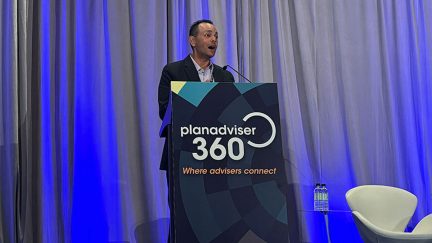Never miss a story — sign up for PLANADVISER newsletters to keep up on the latest retirement plan adviser news.
Skimpy Savings Point to Bleak Futures
According to Fidelity Investments’ new Retirement Preparedness Measure (RPM), which is based on data from Fidelity’s 2013 Retirement Savings Assessment survey, essential living expenses in retirement includes housing, health care and food. The RPM introduces a single score that provides a comparison across generations, combining survey data with the retirement planning methodology Fidelity makes available to its customers.
Under the RPM, working Americans fall into four categories on the retirement preparedness spectrum. The categories are linked to a numeric range (the higher the better), based on an individual’s ability to cover estimated retirement expenses, even in a down market:
- Dark Green: Very Good or Better (95 or over). These households are on track to cover 95% or more of total estimated expenses, even in a down market—33% of those surveyed were dark green.
- Green: Good (80 to 95). On track to cover at least essential expenses, but not discretionary expenses like travel, entertainment, etc.—12% of those surveyed were green.
- Yellow: Fair (65 to 80). Not on track to sufficiently cover all essential retirement expenses, with modest adjustments to their planned lifestyle likely—14% of those surveyed were yellow.
- Red: Poor (less than 65). Not on track to sufficiently cover all essential retirement expenses, with significant adjustments to their planned lifestyle likely—41% of those surveyed were red.
According to the RPM, many Americans are likely to fall short of meeting their retirement income goals, unless they act soon. The median score indicates working Americans are on track to meet just 74% of their estimated retirement expense goals and face a 26% income gap, placing them in the “yellow zone” and forcing them to make spending cuts in retirement that may diminish their quality of life—especially if the market experiences a severe downturn.
Baby Boomers (born 1946 to 1964) are on track to reach 81% of their goals, which places them in the “green zone.” While Baby Boomers entering retirement over the next five to 10 years are in fairly good shape to completely cover at least essential expenses, this generation has less time to take actions that can help move them into “dark green” and be able to completely cover total estimated expenses. They also have fewer options than their younger counterparts to make up any shortfall.
Generation X (born 1965 to 1977) respondents are at 71% of their goal, placing them in the "yellow". Generation Y (born 1978-1988) respondents—who are the furthest away from retirement—are currently falling significantly short and are in the "red" at 62%.
The survey indicates 40% of respondents are saving less than 6% of their salaries today, which is far less than the recommended 10% to 15% suggested by Fidelity. Among Gen Y, that percentage jumps to 51%, versus 43% for Gen X and 34% for Boomers.
“This savings shortfall is one of the biggest reasons the median RPM is in the yellow, although there are several others, too,” says John Sweeney, executive vice president of Retirement and Investment Strategies at Fidelity. “When you factor in the expectations many have of an early retirement, along with increasing longevity and sometimes overly conservative asset mixes for investments, you can see why many people are not as prepared as they need to be to cover their expected expenses in retirement.”
Fidelity identified six actions that can be taken regardless of income levels or the economy to gain control over your financial future and boost retirement preparedness—three prior to retirement and three after:
- Raise savings now. By adjusting the savings rate to at least 15%, the median RPM score of 74 increases by 11% to 82.
- Review your asset mix. By replacing portfolios that are either too conservative or too aggressive with an age appropriate allocation, the median RPM score of 74 increases by 4% to 77.
- Retire later. By adjusting the reported expected retirement age to the full Social Security Retirement Age (between 65 and 67), the median RPM score of 74 increases by 12% to 83.
- Return to work part-time. By adjusting the median RPM to project income earned if respondents worked from one to five years in retirement, the median RPM score of 74 increases by 7% to 79.
- Realize home equity. By factoring in the possibility that all respondents will downsize and convert 25% of their estimated home equity into investable assets for retirement, the median RPM score of 74 increases by 4% to 77.
- Reallocate part of your savings into an annuity. By annuitizing 40% of retirement savings, the median RPM score of 74 increases by 5% to 78.
“Our analysis shows that using these six ‘accelerators’—either individually or in combination—can have a substantial impact on retirement preparedness,” says Sweeney. “In fact, when all six are applied, the Retirement Preparedness Measure jumps an impressive 42%, putting many more individuals in a better financial position to truly enjoy their golden years.”


